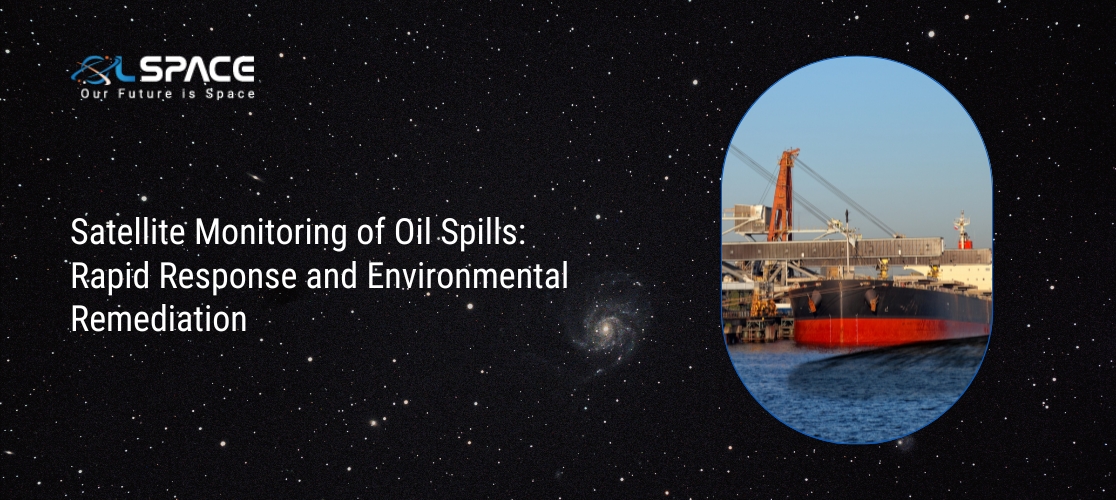30 April 2024
Satellite Monitoring of Oil Spills: Rapid Response and Environmental Remediation

Oil spills pose significant environmental hazards, requiring rapid response and effective remediation measures to mitigate their impact. Satellite monitoring plays a crucial role in detecting and tracking oil spills, enabling authorities to respond promptly and implement remediation efforts. This article explores how satellite technology enhances oil spill monitoring, facilitates rapid response, and supports environmental remediation initiatives.
1. Detection and Monitoring:
Satellites equipped with synthetic aperture radar (SAR) and optical sensors can detect oil spills on the ocean surface, even in remote and inaccessible areas. These satellites capture high-resolution images, allowing authorities to monitor the extent and movement of oil slicks in near real-time.
2. Early Warning System:
Satellite-based monitoring provides an early warning system for oil spill events, enabling authorities to respond quickly before the spill spreads further. By detecting spills at their earliest stages, satellite technology helps minimize environmental damage and reduce cleanup costs.
3. Tracking Spill Movement:
Satellites track the movement of oil spills, providing valuable information on their trajectory and potential impact on coastlines, marine habitats, and sensitive ecosystems. This data helps authorities plan and prioritize response efforts, such as deploying containment booms and protective barriers.
4. Assessing Environmental Impact:
Satellite imagery is used to assess the environmental impact of oil spills on marine ecosystems, wildlife, and coastal communities. By analyzing satellite data, authorities can identify areas at risk, evaluate habitat vulnerability, and develop strategies for protecting sensitive areas.
5. Oil Spill Modeling:
Satellite data is integrated into oil spill modeling systems to predict the spread and behavior of oil slicks over time. These models simulate various scenarios based on environmental factors such as currents, wind patterns, and water temperature, aiding in decision-making and response planning.
6. Response Coordination:
Satellite imagery is shared with response teams and agencies involved in oil spill cleanup operations, facilitating coordination and collaboration. By providing timely and accurate information, satellites help response teams deploy resources more effectively and coordinate cleanup efforts across multiple agencies and jurisdictions.
7. Assessing Cleanup Effectiveness:
Satellite monitoring continues throughout the cleanup process, allowing authorities to assess the effectiveness of remediation efforts. By comparing pre- and post-cleanup satellite images, authorities can evaluate the reduction in oil coverage, track the dispersal of oil residues, and identify areas requiring further attention.
8. Environmental Remediation:
Satellite data informs environmental remediation strategies by identifying areas with high oil concentrations and guiding cleanup operations. Remediation techniques such as dispersant application, in-situ burning, and bioremediation are targeted based on satellite-derived information to maximize effectiveness while minimizing ecological impact.
Conclusion:
Satellite monitoring is a vital tool for detecting, tracking, and responding to oil spills, providing authorities with actionable data for rapid response and effective environmental remediation. By leveraging satellite technology, governments, environmental agencies, and oil industry stakeholders can minimize the environmental impact of oil spills and protect marine ecosystems and coastal communities from the devastating effects of pollution.
